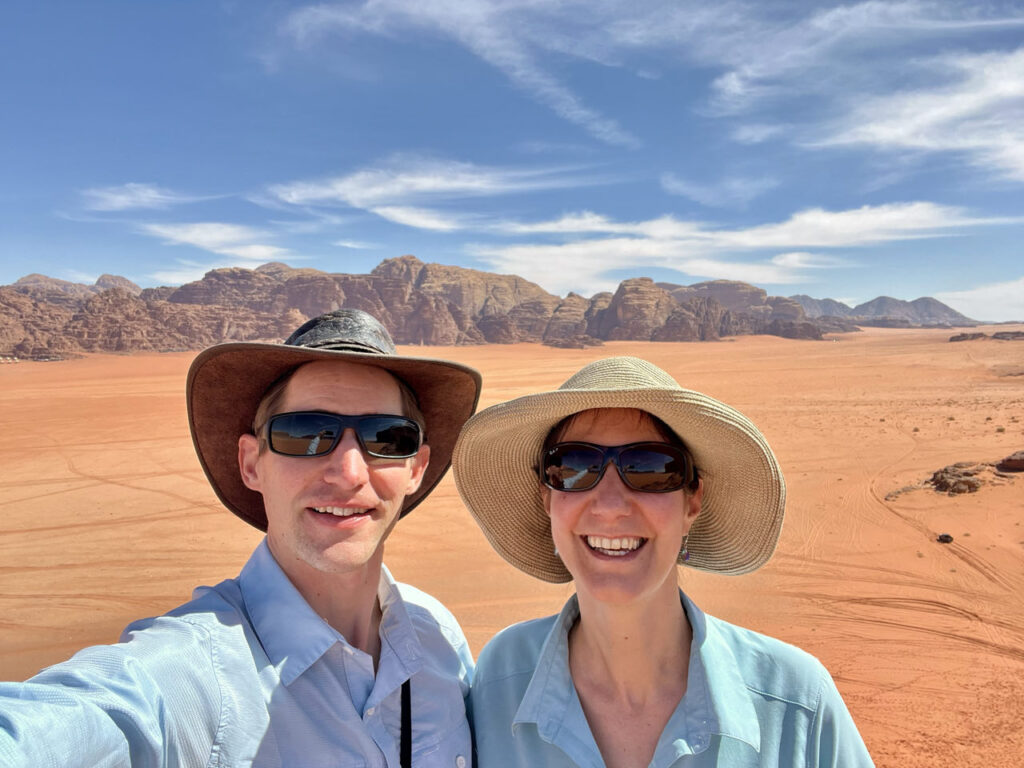
- Uncategorized
-
by faisal alhaemony
POSTED ON BY ERIKA
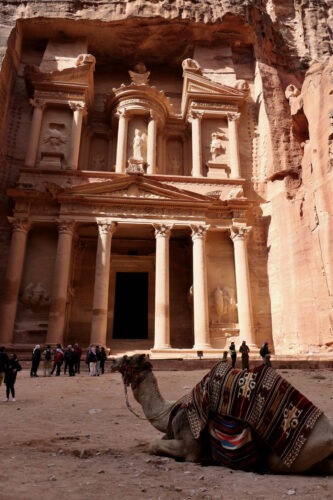
My parents were a bit surprised Victor and I were going to go to Jordan now (February 2024), with the war next door in Israel and Gaza. Turns out, not only is Jordan completely safe right now, but because of that perception, it’s a uniquely good time to visit- and Jordanians need you to go to Jordan too!
Victor and I loved our 8 day trip to Jordan: the incredible wealth of archeological sites from ancient Roman Jerash to the unbelievable Nabatean Petra, the delicious food, snorkeling with healthy soft and hard coral and so many different species of fishes in the Red Sea, floating in the Dead Sea, exploring the desert of Wadi Rum, and staying with helpful, competent, friendly hosts for affordable prices. Jordan is an extremely safe country, and it was not hard to rent a car and drive everywhere. It’s a small country, with just a 4 hour drive from the capital Amman to the southern tip on the Red Sea at Aqaba.
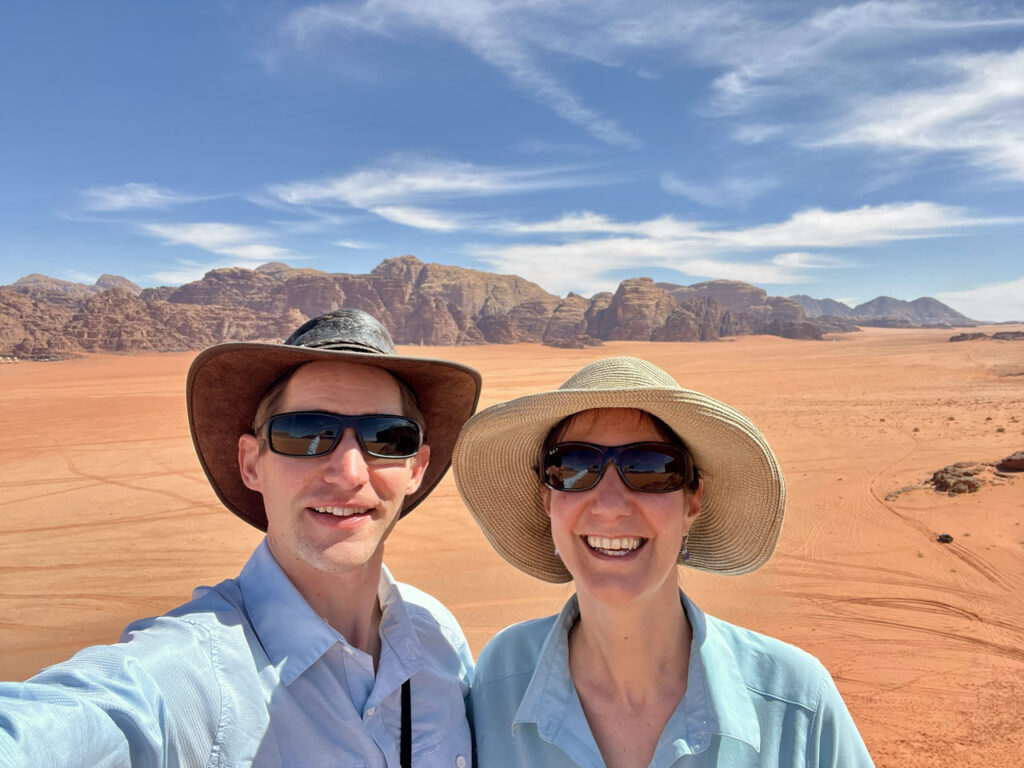
I made a one week Jordan itinerary for you here based on everything we just experienced and enjoyed in February 2024. I know it’s hard to decide how much time to spend at each place and how to piece it all together, so that’s why I created these itineraries. If you have only 3-5 days, I made a shorter itinerary so that you can see the best of Jordan in just a long weekend. Hope they help you!
With one week in Jordan, you can see all the highlights. Here’s my map of everything I’d recommend- all places we went to in February 2024. With more time, slow down or add Israel and/or Egypt, depending on the security situation. Jordan itself is safe, and the American, Dutch, and other governments all agree- there are no travel advisories or restrictions anywhere you would want to go. There are far fewer tourists in Jordan now than there should be because of the war next door, so things are emptier, easier, and cheaper there now than normal. It’s the best time to go in years, with the main tourist site of Petra having 10% of the normal amount of tourists.
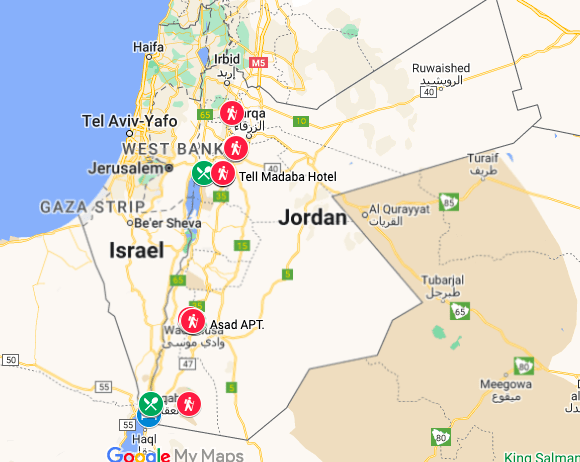
I can’t stress this enough: The safety situation in Jordan is better than in the U.S. You can park your car anywhere safely overnight, there’s virtually no pickpocketing, and I felt totally comfortable as a woman walking everywhere. There’s no danger of violence. At no time when we were there did I feel uncomfortable in any way. It’s a great time to go to Jordan, and they need tourism!
Table of Contents
- When to go to Jordan
- How long to go to Jordan
- What to book ahead of time
- What to do on your trip to Jordan
- Last tips for your trip to Jordan
When to go to Jordan
Jordan has the Mediterranean climate, with a chance of rain in the winter and dry summers. It’s also mostly desert, with cold winter nights and blisteringly hot summer days. This is not a destination for summer vacation- July and August are too hot to enjoy!
March- May is spring, with mild sunny days, flowers in bloom, and temperatures that won’t be too hot in the middle of the day and not too cold at night. This is a great time to go to Jordan. Snorkeling in the Red Sea is best January- May because of the calmer days, so March- May gets you good temperatures in and out of the water as well as reliably sunny days. If you’re a teacher, it’s a great spring break destination! By May, some parts of Jordan get uncomfortably hot- the earlier in spring the better.
February is borderline, but my February vacation was near the end of February, and since I live in northern Europe (Amsterdam), I knew I’d really want some sunshine and adventure by February. Most of the time, February will be sunny, dry, and warm enough (highs of about 17ºC-24ºC/ 50sºF and 60sºF). I brought a fleece, a warm hat, and an undershirt. There was 1 day of rain in the north (Jerash), and we needed wet suits to snorkel in Aqaba- but for me, it was a remarkably sunny week for February compared to February in most of the Northern hemisphere! I think those temperatures are actually great walking temperatures for archeological sites.
June-August is too hot! With an average temperature of at least 34ºC/ 93ºF, this is not an appropriate time to be wandering around enormous archeological ruins with zero shade!
September-November is another great time to go to Jordan, with cooler autumn temperatures. It’s not as good a time to go snorkeling in the Red Sea, so if snorkeling is a priority, go January- May. If it’s not, October break/Thanksgiving break can be an excellent time to get some last sunshine in with moderate temperatures and good prices.
December-January are the most likely to rain, be cloudy, and have uncomfortably cold nights and chilly days. You could always get lucky and have sunny days- and you can always bring appropriate clothes and enjoy the smaller crowds and extra-helpful hosts dealing with fewer guests. Prices will be lower.
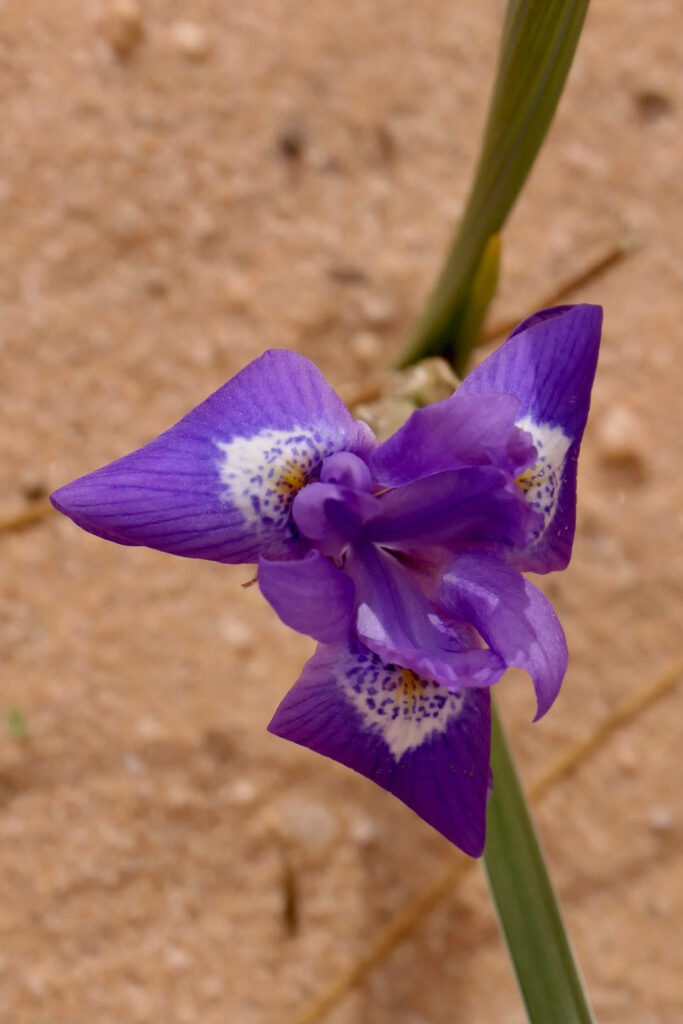
How long to go to Jordan
You could see the most incredible sites in Jordan- Petra and Wadi Rum- in 3 very packed days if absolutely necessary, but I’d recommend at least 5, 8 to be comfortable, and 10 to relax and slow down. My one week itinerary for Jordan has options for 7-10 days, which allows you to see all the best sites while getting a thorough experience at all of them. Of course, with more time, you can get more off-the-beaten track.
If the security situation allows, it’s easy to go from Jordan to Egypt and/or Israel and Palestine, but it was not possible to cross at any of those borders when we were there (February 2024).
What to book ahead of time
It’s always a good idea to book your international flights at least a month ahead of time, if not two or three months before. It’s also more affordable to book your rental car when you book your flights.
We LOVED our experience with Monte Carlo Car Rental. I’ve honestly never had a better experience with a car rental company. They were affordably priced for a 2022 very comfortable hybrid sedan- it was $460 for 8 days including all the extra insurances. With the hybrid, we only had to get gas twice the whole trip with about 1200km, and a full tank was about $40. Monte Carlo was very responsive via email and Whatsapp, and picked us up on time from the airport and drove us back. It’s only a few minutes’ drive from the airport. It was all very easy, quick, helpful, and competently done.
Another task to do before you enter Jordan is to buy your Jordan Pass. Your Jordan Pass covers your visa entry fee, which for us when we went was 40 JOD, and 1, 2, or 3 days’ entry to Petra. Petra alone for 1 day is 50 JOD, and the Jordan Pass with 3 days’ entry to Petra is 80 JOD, so assuming you are entering Jordan and going to Petra for at least 1 day, it’s a no brainer.
The Jordan Pass also gets you into many other sites. For us, it got us free entrance to Madaba mosaics, ancient Roman Jerash, Petra twice, Wadi Rum, and the Roman theater in Amman, as well as covering our visa fee. So for 75 or 80 JOD, it’s a good deal and saves a lot of separate entrance fees and time waiting to buy tickets.
For the Jordan Pass, plan ahead how many days you might want to enter Petra to know which version to get. 70 JOD gets you 1 Petra entry, which I’d only do if you’re sure you only have 1 day you could possibly go, as Petra is an enormous and fascinating site. 75 gets you 2 days, and 80 three days. I bought us the 3 day version in case we felt like we needed to go back a 3rd day, as an extra 5 JOD is far less than the daily rate of 50 JOD if we changed our mind. So I’d recommend buying the maximum number of days you think you might spend, just in case.
Lastly, I’d book your accommodation, as the earlier you book, the better and more affordable the options. You could use my itinerary here, or read my article about how to choose accommodations yourself. Then you’re all set!
What to do on your trip to Jordan
I’ve put these top sites in order from what you absolutely must see on even the shortest trip to what to do if you have enough time, so if you only have 3 days, Petra and Wadi Rum are your goals, whereas if you have at least a week to go to Jordan, you should have time for all of these. It’s a small country- you’ll arrive in Amman, and the most southern point that’s recommended is the Red Sea town of Aqaba, only a four hour drive away.
If you don’t want to rent a car, you’ll need to do a lot of guided group tours or hire a driver. Almost all group tours go here, like G Adventures (younger, 20s, 30s, 40s), Road Scholar (older, must be 55+), and many, many more. On our last day in Amman, we needed to take an Uber as parking and driving in Amman is extremely challenging and Ubers are very cheap and safe ($1). Our driver, Moh’d Alswaiti, spoke fluent English, Spanish, and Arabic, and had lived abroad in several different countries. He tours people around and would be happy to show you around if you don’t want to drive yourself (email: malswaiti@yahoo.com, Whatsapp +962 79 677 4301).
There are also buses between Amman and Aqaba- but to get to the Dead Sea, Petra, Wadi Rum, Madaba, and Jerash, you would need to do a group excursion or hitchhike. While Amman was stressful to drive in and very difficult to park in near the historic sites you want to see, the entire rest of the country was easy to drive around and had free and plentiful parking. So I’d highly recommend renting a car, and when it’s time to go to Amman, park wherever your hotel recommends and take Ubers or walk everywhere.
Petra
Why go: Petra is the main reason to go to Jordan. There is simply nothing else like this ancient Nabatean city in the world. A powerful, wealthy city of 20,000 from about 300 BCE to about 300 CE, this well-hidden human-built oasis in the desert has to be seen to be believed. You can’t go to Jordan and not go to Petra, even if you only have 3 days. It’s one of the 7 Wonders of the World and deserves it. You should spend as much time here as you can in your Jordan itinerary, ideally at least 1 full day and another half day.
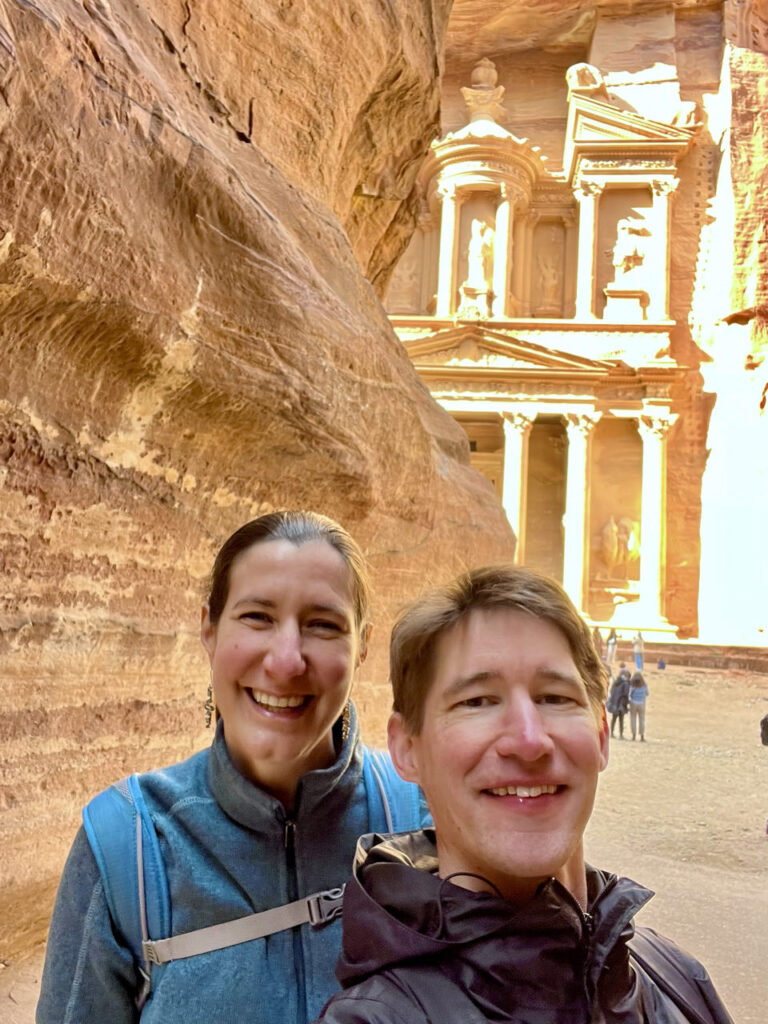
We really enjoyed our accommodation, Asad Apt., with a helpful and knowledgeable host, included breakfast, a free parking lot, and a 5 minute drive to the Petra Visitor’s Center. We also ate delicious dinners at two places with excellent Jordanian food- Elan and Sajiat al Janoob. I learned all about Petra and the Nabateans by listening to the Fall of Civilizations podcast about them, which I’d highly recommend! There’s a version on youtube from the author, Paul M.M. Cooper, as well. The podcast is the perfect accompanment to your Jordan roadtrip! Here’s a brief summary of what I learned from him:
Petra was built by the Nabateans, who controlled the trade of incense for hundreds of years. Frankincense and myrrh, the sap from two trees, were burned as incense in every single Greek and Roman temples throughout their empires. Those trees only grew in Saudi Arabia, and only the Nabateans knew where to find water to cross the Arabian peninsula, get the incense, and make it back to the Mediterranean alive. For the Nabateans’ efforts, they took 25% of the profit. With over 1 million tons of frankincense and myrrh burned in the Roman Empire at its height, the Nabateans had vast wealth.
The Nabateans knew that their wealth would be a source of envy, so their main city was well concealed halfway between the Red Sea port of Aqaba and the Mediterranean port of Gaza. Any invaders would have to travel on camelback for 3 days through the arid desert before arriving, if he could find it at all. Even today, you can’t see Petra at all as you approach. You walk over 2km/ over 1 mile through canyons without a hint of what’s to come before you see your first glimpse of the massive city hidden within.
In such a desert, the Nabateans constructed dams and reservoirs that only they knew about, hiding water for themselves all over for when it was needed. Every camel caravan would stop in Petra, so Petra had to support not just 20,000 permanent inhabitants, but also hundreds of visitors each day. Complex irrigation canals ran everywhere. Walking along the canyon to Petra, you can still see the irrigation canals and even the remains of the terracotta pipes.
To grow crops to support this city, the Nabateans channeled water to every single seed. These channels made farming take up 50x as much space as normal farms- but they had plenty of space and almost no water, so it worked! We saw pieces of terracotta everywhere on the ground.
When the Romans first tried to cut out the Nabateans from their trade route, a Nabatean offered to take the Roman army himself directly to the Saudi Arabian incense plantations. The Nabatean took the 8,000 Roman soldiers on the most circuitous and dangerous route, making the trip take 6 months, during which time half the soldiers died of disease, starvation, and thirst…so the Romans gave up for another 100 years!
Eventually, the Romans did conquer the Nabateans, and took the incense directly from Saudi Arabia by sea to the Mediterranean, cutting out Petra’s source of wealth and making it a backwater. When in the 300s an earthquake destroyed all those terracotta reservoirs, dams, and pipes, there weren’t enough people living there anymore to make it worth rebuilding. A small Christian community lived on there during the Byzantine times until it became mostly forgotten about for centuries until a Swiss explorer, Johann Ludwig Burckhardt “discovered” it in the 1800s.
Since Petra had 20,000 people and so much wealth, it is an enormous complex with lots to explore. There are shops selling water, tea, coffee, and food all over the complex, so you don’t have to worry about that (though we brought our own picnic and water, which is also allowed). There are even clean bathrooms with soap and toilet paper everywhere! You should already have your ticket from the Jordan pass, which you’ll have to exchange for a real ticket at the ticket office. If you’re going multiple days, don’t lose that ticket! Here are the must-see areas:
The Visitor Center and Museum
You’ll need to pick up your tickets with your Jordan Pass here anyway, and the museum, while small, is modern, interactive, and engaging. It’s also open until 8pm each day, so you can check it out after you’ve used all of daylight exploring Petra- or before going to Petra by Night.
The Treasury
This is the most famous image, the picture you’ve seen before. It’s the first thing you’ll see when you emerge from the canyon (siq), and it’s spectacular. It’s all lit up in the morning, but luckily for sleepyheads like us, it actually isn’t fully lit up until a couple of hours after sunrise- sometime between 10am-12pm depending on the time of year. So no need to wake up at sunrise, though give yourself at least 40 minutes from the entrance to walk there through the spectacular canyon.
This is also the location for Petra by Night. The show itself is mediocre, unfortunately, but the canyon and Treasury lit up only by thousands of real candles is magical, so if you just relax, enjoy your candlelit surroundings, imagine what it was like here two thousand years ago, and appreciate the views, it’s worth it. There were also less than a hundred people at the show when we went in February 2024, and our hosts said it can have more than a thousand normally- that would take away from the experience.
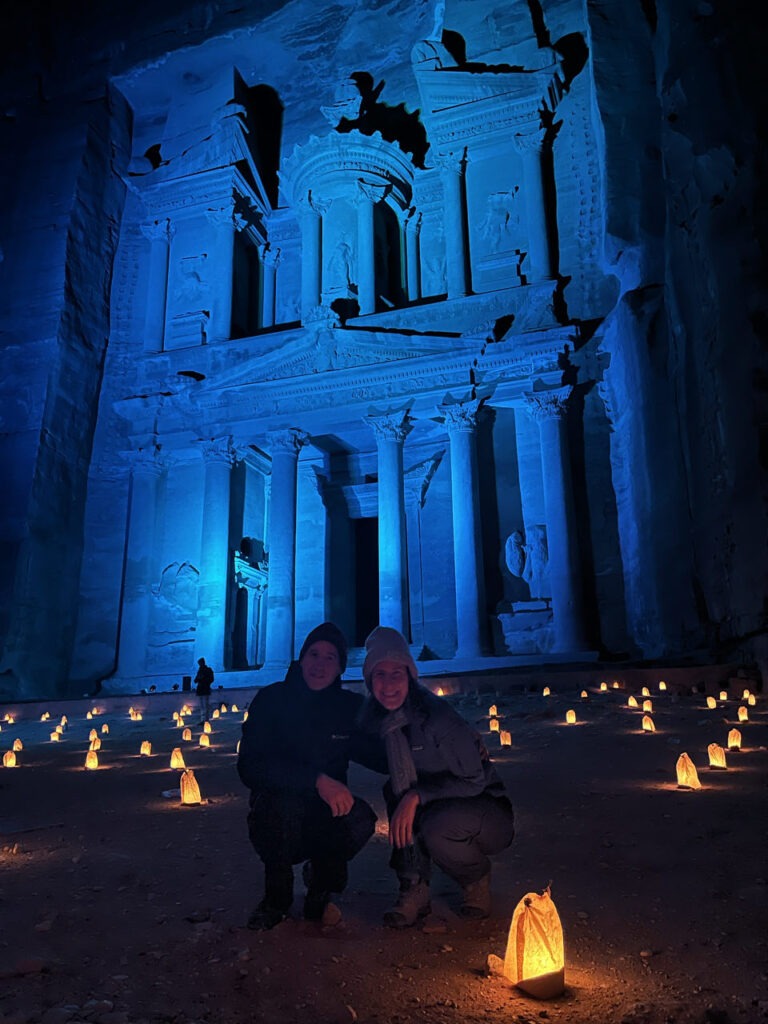
The Monastery
This is the next most impressive building, if not equally impressive. Massive, gorgeous, and with spectacular views all around, it’s worth the steep uphill climb to get here. It’s on the other end of the complex from the Treasury, and it’s all lit up in the afternoon/early evening light- though Petra closes at sunset and it is about a two hour or more hike to any exit from here.
If you only have one day in Petra, then I’d get to the Treasury for the morning light, hike all the way here through the rest of the complex by the afternoon, and go back out through the Treasury before sunset. There are viewpoints to hike to right by the Monastery if you have energy left!
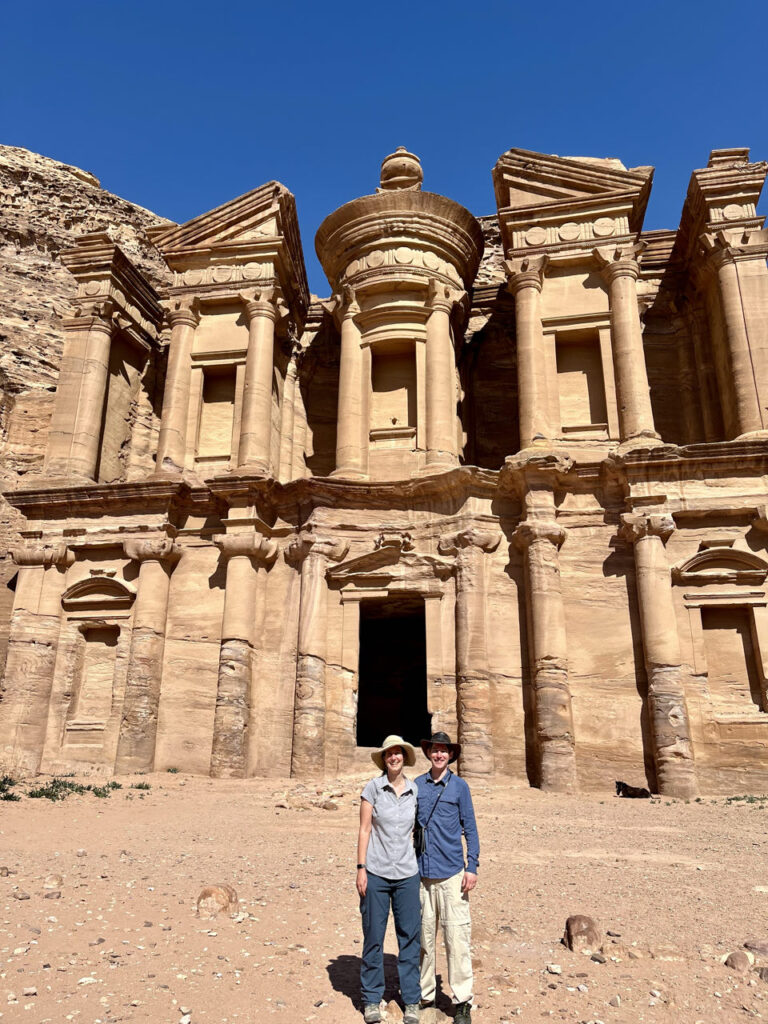
The High Place of Sacrifice
If you have one week in Jordan, then I’d recommend 1.5 days in Petra and you should have time for this hike for golden hour evening views. It’s a 40 minute uphill hike shortly after the Treasury where you can look down on all of Petra. The path itself is gorgeously carved out of beautifully layered rocks, and at golden hour it really did glow! The Nabateans made this path and the path to the Monastery themselves as they were taking these routes themselves.
If you’re short on time, after getting to the altar and seeing the views, you can walk back the way you came. If you have more time, you can continue walking along the path past more temples and tombs that will take you on a backdoor route to “downtown” Petra, where the main shops and markets were in the past and nowadays a restaurant. Just be warned that from there, you’re still at least an hour away from the exit if not more, so you can’t actually watch the sunset from that point and take the long route back.
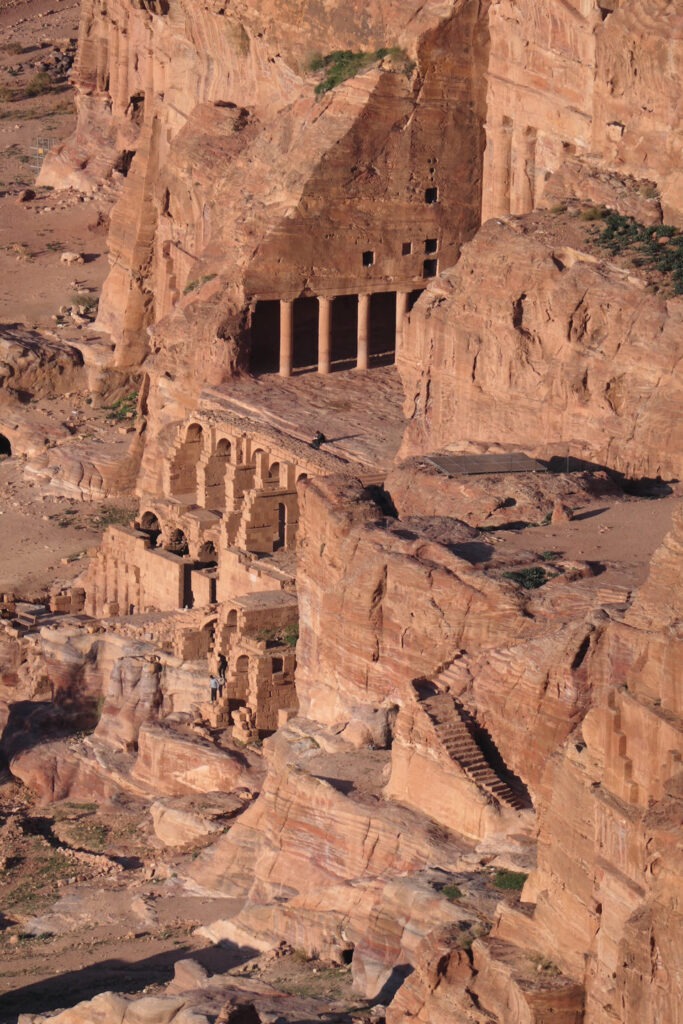
Little Petra
Why go: Little Petra has one part that is worth seeing even after seeing the real thing- one of the buildings has an incredibly well preserved ceiling with beautifully intricate frescoes from 2,000 years ago. That one ceiling gives you a taste of how all of Petra would have been decorated! If you go to Jordan for one week, include it. If you only have 3-4 days, skip it.
Little Petra is a much smaller complex that is outside of the rest of the Petra area. There are two ways of getting there:
- You can walk from the Monastery to Little Petra. This is supposedly about 3-4 hours walking. There is supposed to be a shuttle halfway, which makes it about 1 hour walking from the Monastery. When we were there, the shuttle was only running in the morning…so when we saw the beautiful afternoon light at the Monastery and then walked to the shuttle point in the late afternoon, the ranger said the last shuttle had been hours earlier. He was kind and took us anyway, but maybe only do this option in the morning, or give yourself enough daylight to walk another 4 hours after you get to the Monastery.
- Or, you can take a park shuttle to Little Petra from the Petra Visitor Center…but also only in the morning (which we didn’t do because we wanted to see the morning light on the Treasury, which was spectacular).
- Or, you can take a taxi to/from Little Petra anytime for 20 JOD. We ended up having to do this on the way back because the shuttle was only in the morning and that wasn’t clear when we made our plans. It was worth it, though, to see everything lit up perfectly!
- Check at the Visitors Center when these shuttles are actually running, as when we were there Petra had about 10% of its normal visitors, so everything was running at half speed.
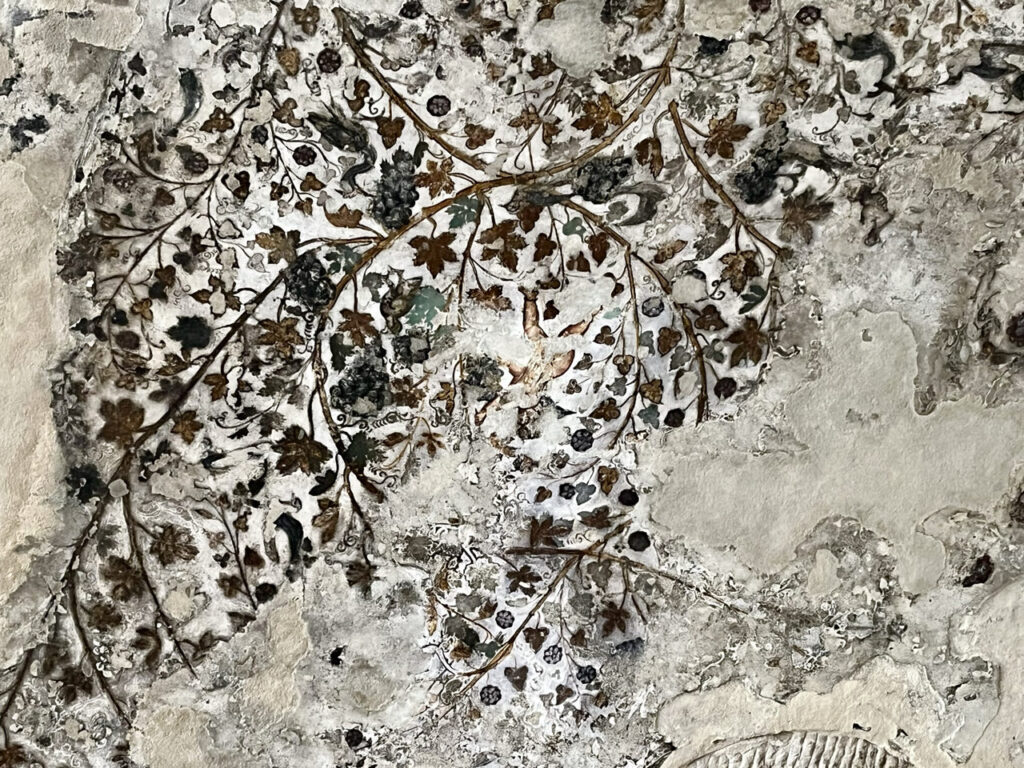
Wadi Rum
Why go: Wadi Rum is the desert of Jordan that you’ve seen in Dune, Lawrence of Arabia, Star Wars, and Indiana Jones. It’s gorgeous canyons, sand dunes, and camels- and there are dozens of comfortable desert camps waiting to host you in a bedouin experience. If you go to Jordan, Wadi Rum and Petra are the two absolute must-see’s, even if you only have 3-4 days. If you have one week in Jordan, spend the night.
I’d recommend a full day jeep tour and spending the night to get the whole experience, but there are 4 hour jeep tours and/or camel rides if you have less time. It’s a two hour smooth highway drive from Petra, so if you’re really short on time, a quick trip to Petra and Wadi Rum could get you the biggest highlights of Jordan in just a few days.
However long you’re going for, the routine is the same: Check in at the Visitor’s Center, where all you have to do is register if you have the Jordan Pass (otherwise, there’s an entrance fee). At the Visitor’s Center, you could arrange whatever tour you’d like then and there. Or, talk with the place you’re staying in ahead of time, and they’ll arrange whatever you want and give you directions to meet your guide from the Visitor’s Center.
We stayed at the Bedouin Bunch Camp, and they arranged our full day tour for us, though the routes are prescribed by the Visitor’s Center so that most of the desert is left undisturbed by humans not to damage the ecosystem any further, so the tours won’t vary much from place to place. The full day tour takes you from one scenic spot to another, most of which allow you to climb/scramble up rocks to lots of high points with spectacular views. We also got to see ancient petroglyphs, which was really special for me. You’re able to do a lot of hiking and bouldering on the tour, though you don’t have to if you don’t want to.
At the camps, you have a buffet dinner and breakfast, which was quite tasty and varied at ours. They cooked the meat under the sand for us, and it sounded like they did a different traditional dinner each night so that if you did stay there multiple nights, you’d have lots of variety. It is extremely affordable to stay there, so if you have time, it’s a beautiful place to relax and take your time, enjoying your silent natural surroundings. Wildflowers were in bloom for us as it had rained just a few days before.
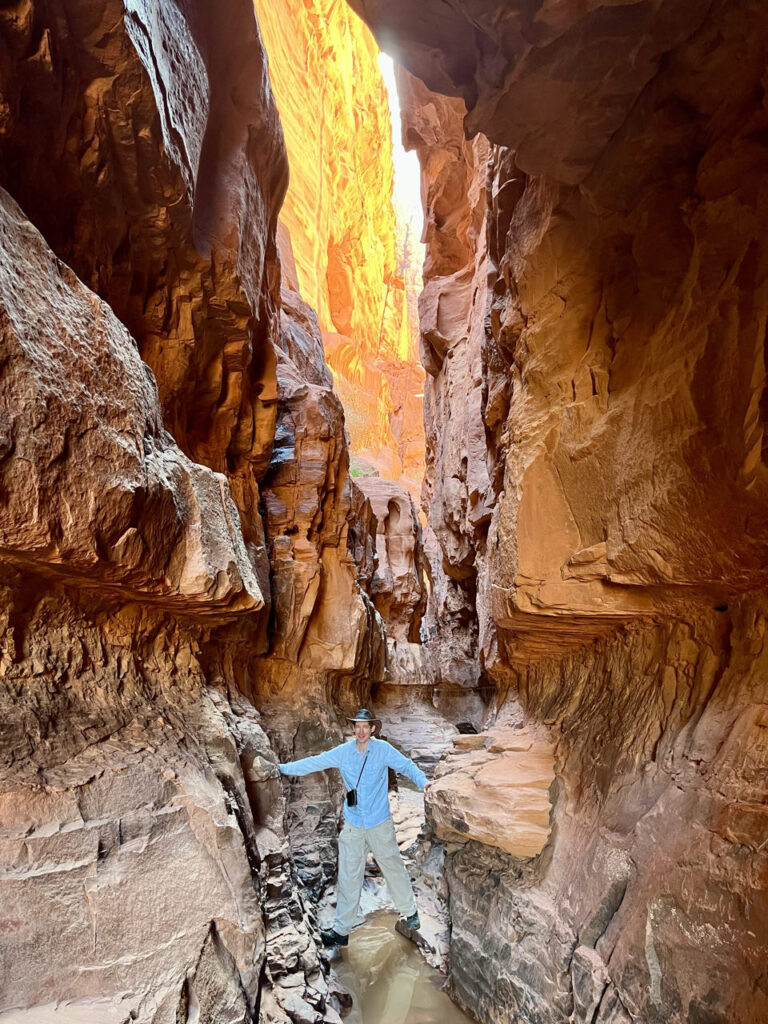
Dead Sea
Why go: Floating in the Dead Sea and having a mud bath is an experience you can’t get anywhere except in Jordan and Israel. It feels wonderful! The water is warm, and the outside temperatures are also much warmer- when we were there in February, it was 24 degrees outside and a bit warmer in the water, sunny and beautiful! If you go to Jordan to relax, this is the place. It’s worth adding to your Jordan itinerary if you have at least 5 days or relaxing and massages are a major priority for you.
Unfortunately, there is no budget way to do the Dead Sea comfortably. There are public beaches, but they don’t have public showers, and you do not want to walk around salt-encrusted the rest of your day. So you need to pay either for a day pass at a hotel that is on the Dead Sea, or pay for a night at a resort on the Dead Sea- and there simply are no truly budget options. It’s a resort area.
Having said that, I’d highly recommend the place we did stay, Samara Resort. At 94 JOD, it was affordable, while a splurge for us. The apartment was gorgeous, with a full kitchen, 2 bathrooms, and 4 beds available- it would have been comfortable for a whole family. There were 3 pools and a hot tub, and it had private access to the Dead Sea, so it was easy to walk in a swimsuit and towel directly to the sea. An attendant working there had mud all ready for us, as well as salt, and scrubbed us thoroughly with mud, giving us a fantastic massage and hammam experience! We also loved floating in the warm water!
Afterwards, we could properly shower off all the salt, though we didn’t need any soap or shampoo. Our hair and skin felt so smooth, soft and clean for days! They also gave us some snacks for breakfast, which was really helpful.
While there, we had a beautiful and delicious meal at Rehan Lebanese Cuisine. Gorgeous outside seating with a view of the Dead Sea, varied and interesting menu, and affordable prices for such a location and quality. The service was attentive and helpful. Highly recommend!
If you have a family or want a romantic or relaxing time, spend a couple of nights here and relax. Float, mud bath, massage, high quality food, fancy accommodations with pools all over- this is the place to take a vacation from your vacation. On a short trip, you could get a day pass and float/mud bath and head out, but it is probably a good idea to spend at least 1 night and give yourself some relaxation time. Enjoy!
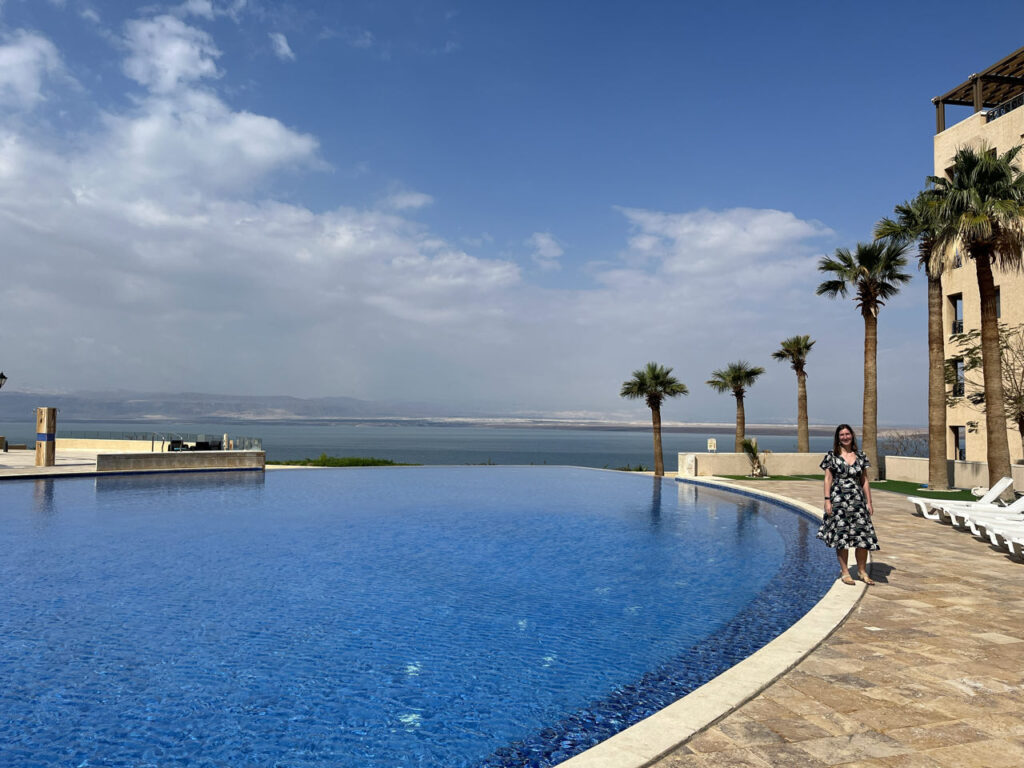
Aqaba and the Red Sea
Why go: The only reason to go here is if you want to be in the water. This is the spot to go snorkeling, scuba diving, or other water sports. It’s a fantastic spot for those activities, but otherwise it’s not worth your time. On a trip to Jordan, go here if you have at least 5-6 days and you love being underwater. With one week in Jordan, you’ll definitely have time to spend the night here.
My husband and I love snorkeling, so for us, it was a must. The Red Sea is a fantastic place to go snorkeling or scuba diving, as the visibility is great, there are healthy soft and hard corals, and the reefs are extremely close to shore. The Jordanian King loves diving, so he is protecting most of Jordan’s Red Sea, and has several coral restoration projects ongoing, including a sunken plane and tank conveniently close to shore (close enough for us snorkelers to enjoy!).
We stayed at Aqaba Pro Divers, which we’d highly recommend. They had very professionally maintained gear (wetsuits, booties, snorkel, mask and fins all worked great). Our hosts offered us a snorkel guide both days, and both were excellent at finding animals we wouldn’t have seen and showing us all the different spots. The best spots were quite spread out and some in deeper water, so we never would have found them all alone. The snorkeling guide, the wetsuits and snorkel gear, and dropping us off at the spots was 30 JOD total for the two of us- well worth the money!
In February, the water felt cold at about 22ºC (72ºF), especially because it was a bit cloudy and chilly outside our first day there. When the sun came out the next day, it felt a lot warmer, but we still appreciated the full length wetsuits we borrowed from our hosts, the dive shop. I’m sure March or April would have been more pleasantly warm, but the summer would have been far too hot. Our hotel was also comfortable, and our breakfast was delicious and extensive. We’d highly recommend staying here if you want to snorkel or scuba dive!
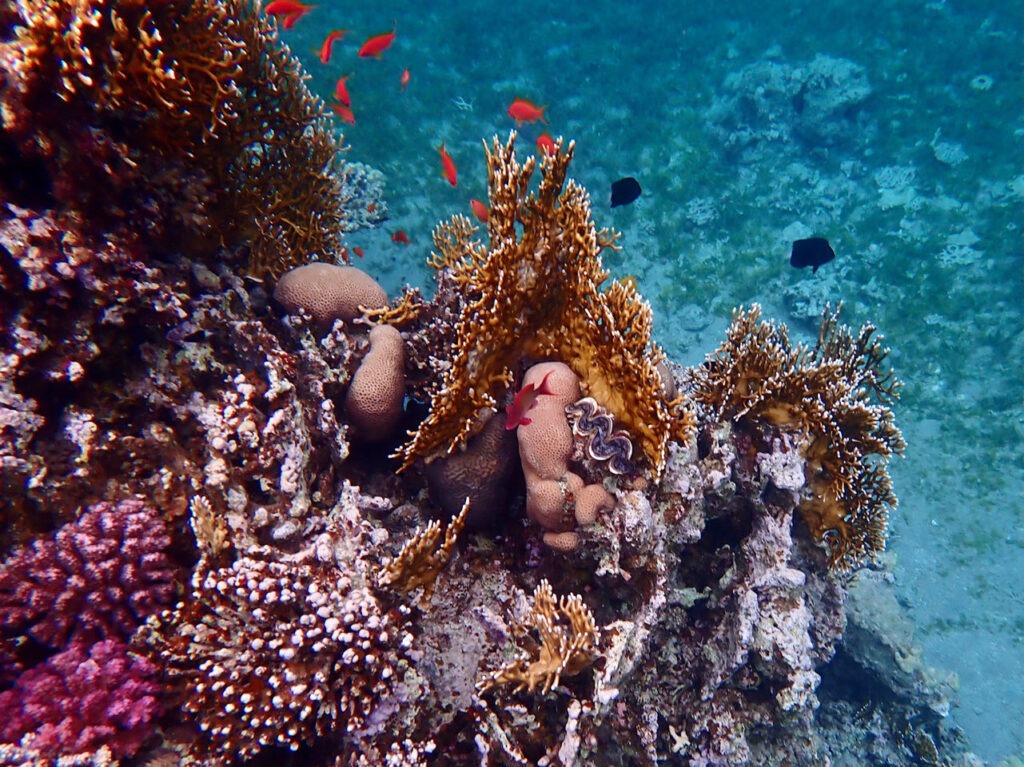
Amman
Why go: Ancient Roman ruins in a modern city, fantastic modern museum, excellent restaurants, and horrible traffic and parking situation but cheap easy taxis. It’s worth adding Amman to your Jordan itinerary if you want to see modern Jordan, love museums, want the best food, and don’t mind traffic.
If you go to Jordan, you’re likely to spend a night in Amman. It has a beautifully preserved citadel that was used by the Romans, Byzantines, Umayyads, and Ottomans, and a Roman theater that’s still used to host performances today. The Jordan Museum is extremely well done with important artifacts and engaging clear displays. You can eat well, from fancier places like Jordan Heritage or cheap but excellent falafel sandwiches here next door to delicious smoothies and freshly squeezed pomegranate juice here. The Jordan Museum and the leafy, tasty street that has the falafels shows you the wealthy, trendy modern capital city.
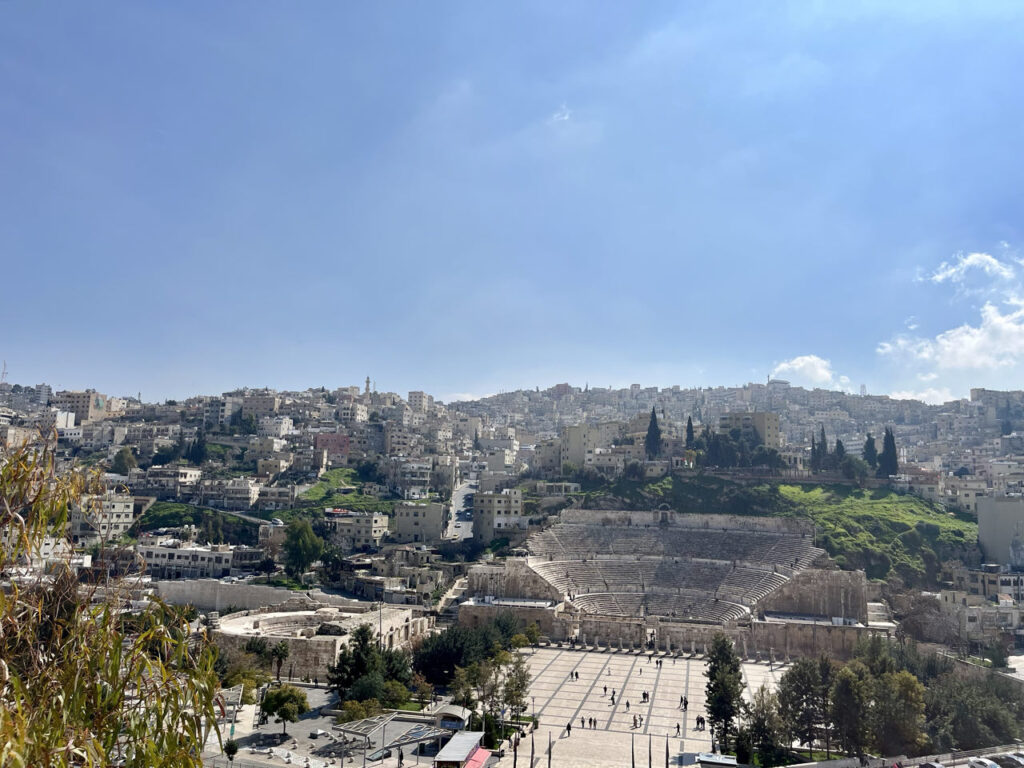
Jerash
Why go: An enormous, excellently preserved Roman city without the crowds. If you have one week in Jordan, definitely add it, or if you haven’t seen good examples of Roman cities or love Roman cities and archeology.
Just an hour’s drive north of Amman, Jerash shows off the power and grandeur of the Roman Empire. This city of 15,000 had 3 different theaters, a hippodrome for chariot races, a gorgeously preserved forum, those famous straight Roman roads with the imprints of chariots still visible, and enormous temples. It’s all in the fertile agricultural valley of Jordan, with lush green hills and agricultural products for sale all along the road (in February, it was thousands and thousands of tomatoes). A different piece of Jordan’s history and culture.
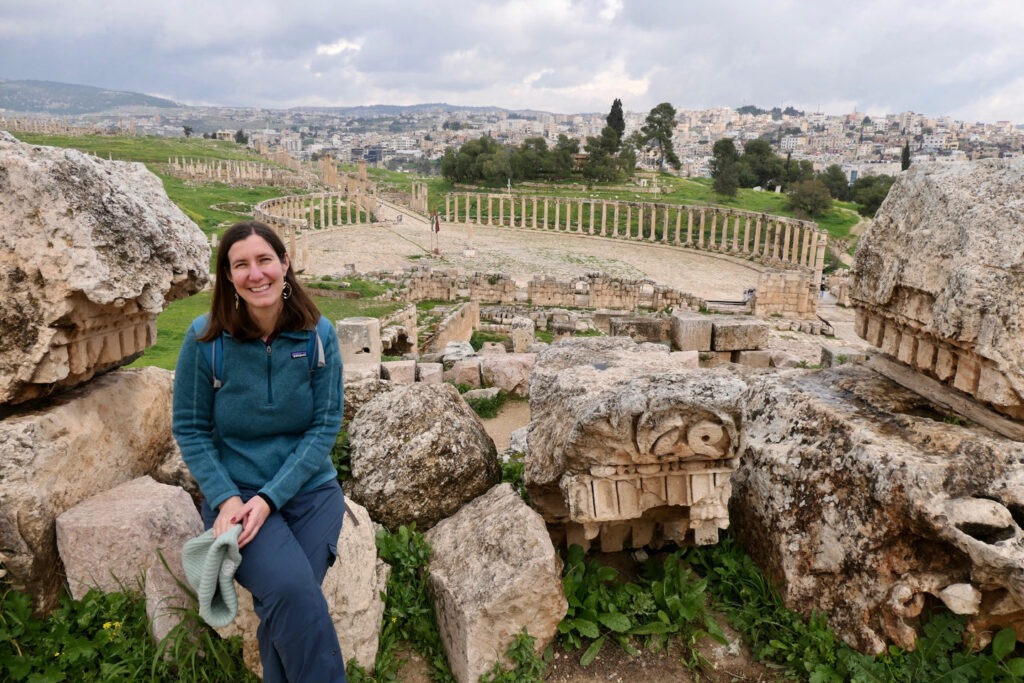
Madaba
Why go: See some beautifully preserved Byzantine mosaics, avoid the driving chaos of Amman, and sleep near the airport. For your Jordan itinerary, go here on your way to or from the airport. If you have one week in Jordan, spend the night.
When we arrived in Jordan at 8pm, got our rental car, and drove off- it was after 9pm and pitch dark. I was so glad we’d decided to stay in the small town of Madaba, only 20 minutes’ away, at a pleasant, quiet hotel with excellent breakfast and easy, free parking. The next morning, we drove just a few minutes to the Madaba Visitor’s Center, where we left our car with a beautiful mosaic mural. From there, we walked around to several different archeological sites (see map).
All the sites are small, all are either free, covered by the Jordan Pass, or just 1 JOD. While we go slowly and love archeology, it took us less than 2 hours. So it’s a relaxing first morning in Jordan, or a pleasant stop on your way to the airport on your way back. There are several cheap and fast tasty lunch options, like this and this, and then you’re on your way. The mosaics are incredible and important historically- there’s one that has the earliest surviving known map of the historical sites mentioned in the Old Testament (Torah/Bible). There are also Greek myths, fruits and vegetables, animals like lions and camels, Old Testament stories, and Islamic geometric patterns.
Last tips for your trip to Jordan
- People are generally very friendly, knowledgeable, and helpful- ask your hosts for advice.
- It really is safe. Check any travel warnings from your home country, but Jordan works really hard to keep itself safe. Don’t worry if the police pull you over. They were polite and friendly to us every time.
- When driving: assume no one will signal before changing lanes, merging, or turning. Also be ready for speed bumps that are quite bumpy and not marked!
- Book your flights, rental car, and the Jordan Pass in advance.
- If you want to know exactly how to plan out your trip hour-by-hour, day-by-day, then buy my itineraries here- I have a one week itinerary and a four day itinerary, and both of them have options if you have a few days more or less!
- Use my map to orient yourself on where everything is.
- Have a wonderful trip!
